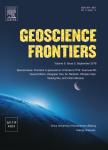Climatology, trend of aerosol-cloud parameters and their correlation over the Northern Indian Ocean
作者机构:Academy of Scientific and Innovative Research(AcSIR)Ghaziabad201002India Aerosol and Cloud Research LabGeological Oceanography DivisionCSIR–National Institute of OceanographyGoa403004India
出 版 物:《Geoscience Frontiers》 (地学前缘(英文版))
年 卷 期:2023年第14卷第4期
页 面:173-186页
核心收录:
学科分类:070903[理学-古生物学与地层学(含:古人类学)] 0709[理学-地质学] 07[理学] 070901[理学-矿物学、岩石学、矿床学] 0708[理学-地球物理学] 0704[理学-天文学]
基 金:National Centre for Environmental Prediction National Aeronautics and Space Administration, NASA National Oceanic and Atmospheric Administration, NOAA University Grants Commission, UGC National Institute of Oceanography, India, NIO
主 题:Aerosol Cloud properties Northern Indian Ocean Climatology Trend Correlation
摘 要:Aerosols are one of the important atmospheric constituents and exert indirect impact on climate through the modification of microphysical and radiative properties of clouds that in turn perturb the precipitation ***,the long term quantification of changes in aerosol and cloud characteristics and their interactions on both temporal as well as spatial scale will provide a crucial information for the better assessment of future climate *** present study,18 years(2003-2020)MODerate Resolution Imaging Spectro-radiometer(MODIS)derived aerosol-cloud dataset over the Northern Indian Ocean(NIO)were analysed to assess climatology and trend of aerosol,cloud characteristics and their *** found a strong heterogeneity in spatio-temporal variation of aerosol and cloud parameters over the NIO that are more prominent for the coastal *** climatological mean of aerosol loading is found high(AOD≥0.5)over the outflow region along the Indian sub-continent and low(AOD≤0.2)over the northern equatorial open *** climatological mean of cloud properties shows dominance of optically thicker deep convective(CTP700 hPa and CTT273 K)over the northwestern Arabian Sea(AS).Similarly,bigger effective radii(17µm)observed along the equatorial open ocean whereas smaller CER(0.



